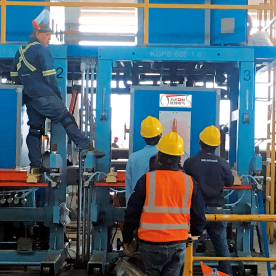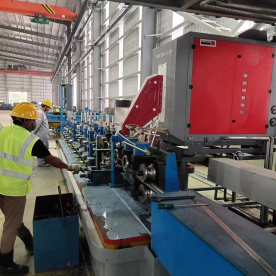[Annealing Machine Applications in Industry]Innovative Uses of Annealing Machine Applications in Industry: Enhancing Efficiency, Quality, and Performance for Modern Manufacturing
News 2024-8-3
In the ever-evolving landscape of manufacturing and industrial processes, the demand for high-quality materials capable of withstanding significant stress and varying environmental conditions has become paramount. One of the most critical processes utilized in various industries today is annealing. Annealing involves heating materials, particularly metals, to a specific temperature and maintaining that temperature for a desired duration before cooling them down. This process improves the material properties, including ductility, toughness, and hardness. At the core of this process lies the annealing machine, a sophisticated piece of equipment with diverse applications across several industrial sectors.
Understanding Annealing Machines
Annealing machines come in various configurations, suitable for different materials and production requirements. Continuous annealers, batch annealers, and bell annealers are some common types. Each provides specific temperature control, atmosphere management, and cooling techniques that cater to the unique needs of diverse materials. The capacity for automation in these machines enhances the efficiency of production processes, minimizing human error and improving consistency.
Applications in the Steel Industry
One of the most notable applications of annealing machines is in the steel industry. Steel is an essential component in construction, automotive, and appliance manufacturing, making its quality vital for these sectors. Annealing machines assist in alleviating internal stresses and improving the mechanical properties of steel products through processes like stress relief and spheroidizing. This enhances the steel’s ability to withstand loads, making it more reliable for structures and machinery.
For instance, in the production of wire and tubing, continuous annealing machines allow for mass processing of material while guaranteeing uniform qualities. As the steel is pulled through the annealing furnace, controlled heating allows for the softening of the steel, making it easier to shape into required forms. The outcome is steel that meets stringent industry standards.

Innovative Uses of Annealing Machine Applications in Industry: Enhancing Efficiency, Quality, and Performance for Modern Manufacturing
Beyond ferrous materials, annealing machines are equally vital in processing non-ferrous metals such as copper, aluminum, and titanium. In the electronics industry, annealing plays a critical role in producing high-purity copper wires, which are fundamental in wiring applications and electrical connections. Through annealing, the conductivity and ductility of these metals significantly improve, resulting in products that are both efficient and durable.
Moreover, in the aerospace industry, where titanium is extensively used due to its lightweight and high strength, annealing machines help in ensuring that titanium components possess optimal properties for performance in harsh environments. This application is crucial in manufacturing parts that face extremes of temperature and pressure.
Annealing in Glass and Ceramics
The application of annealing isn’t limited to metals; it extends to the glass and ceramics industries. In glass manufacturing, annealing ovens serve to remove internal stresses that can occur during the cooling of glass. The controlled cooling process provided by annealing ensures that glass products, such as bottles or glass panels, maintain their structural integrity and optical clarity.

Innovative Uses of Annealing Machine Applications in Industry: Enhancing Efficiency, Quality, and Performance for Modern Manufacturing

Innovative Uses of Annealing Machine Applications in Industry: Enhancing Efficiency, Quality, and Performance for Modern Manufacturing
Looking ahead, the integration of advanced technologies such as artificial intelligence, machine learning, and automation into annealing processes is poised to revolutionize the industry. Smart annealing machines can optimize heating and cooling rates more precisely, leading to improved energy efficiency and reduced operational costs. Furthermore, the adoption of Industry 4.0 innovations can enable real-time monitoring and control, enhancing overall quality assurance in production.
Environmental considerations are also driving innovations in annealing machine applications. The quest for sustainability is pushing industries towards eco-friendly practices. As a result, developments in energy-efficient annealing processes could significantly reduce carbon footprints associated with traditional methods.
Conclusion
Annealing machine applications in industry are crucial to improving material properties across various sectors, including steel, non-ferrous metals, glass, and ceramics. The advancements in annealing technology not only lead to higher quality products but also enhance operational efficiency, proving invaluable in modern manufacturing. As industries continue to innovate and push towards sustainability, the future of annealing machines looks promising, with potential developments that could further transform manufacturing processes for the better. The versatility and essential nature of annealing machinery emphasize its crucial role in ensuring that industries meet the demands of quality, efficiency, and sustainability for years to come.
